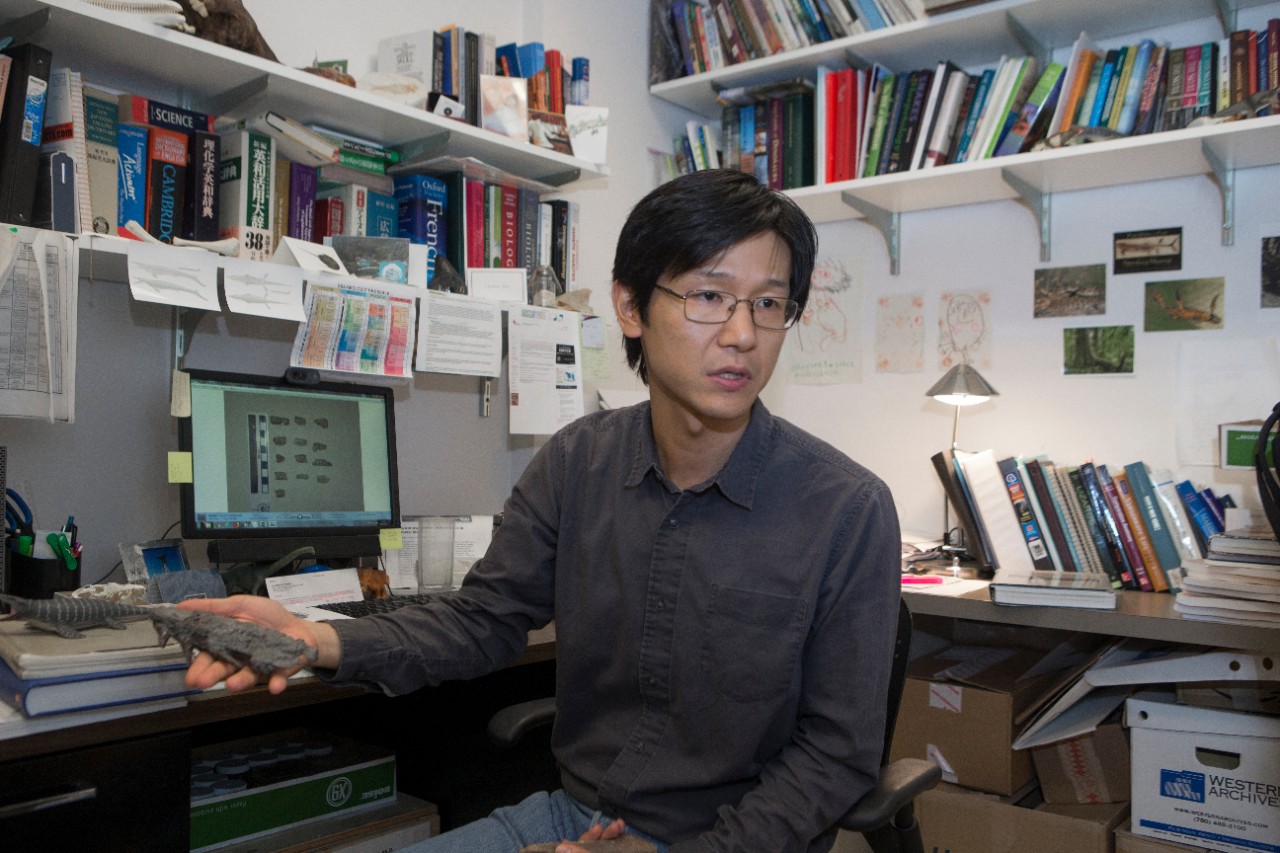
This Japanese ‘dragon’ terrorized ancient seas
A mosasaur called the Wakayama ‘blue dragon’ ruled prehistoric waters
Researchers have described a Japanese mosasaur the size of a great white shark that terrorized Pacific seas 72 million years ago.
Extra-long rear flippers might have aided propulsion in concert with its long finned tail. And unlike other mosasaurs, or large extinct marine reptiles, it had a dorsal fin like a shark’s that would have helped it turn quickly and with precision in the water.
University of Cincinnati Associate Professor Takuya Konishi and his international co-authors described the mosasaur and placed it in a taxonomic context in the Journal of Systematic Palaeontology.
The mosasaur was named for the place where it was found, Wakayama Prefecture. Researchers call it the Wakayama Soryu, which means blue dragon. Dragons are creatures of legend in Japanese folklore, Konishi said.
“In China, dragons make thunder and live in the sky. They became aquatic in Japanese mythology,” he said.
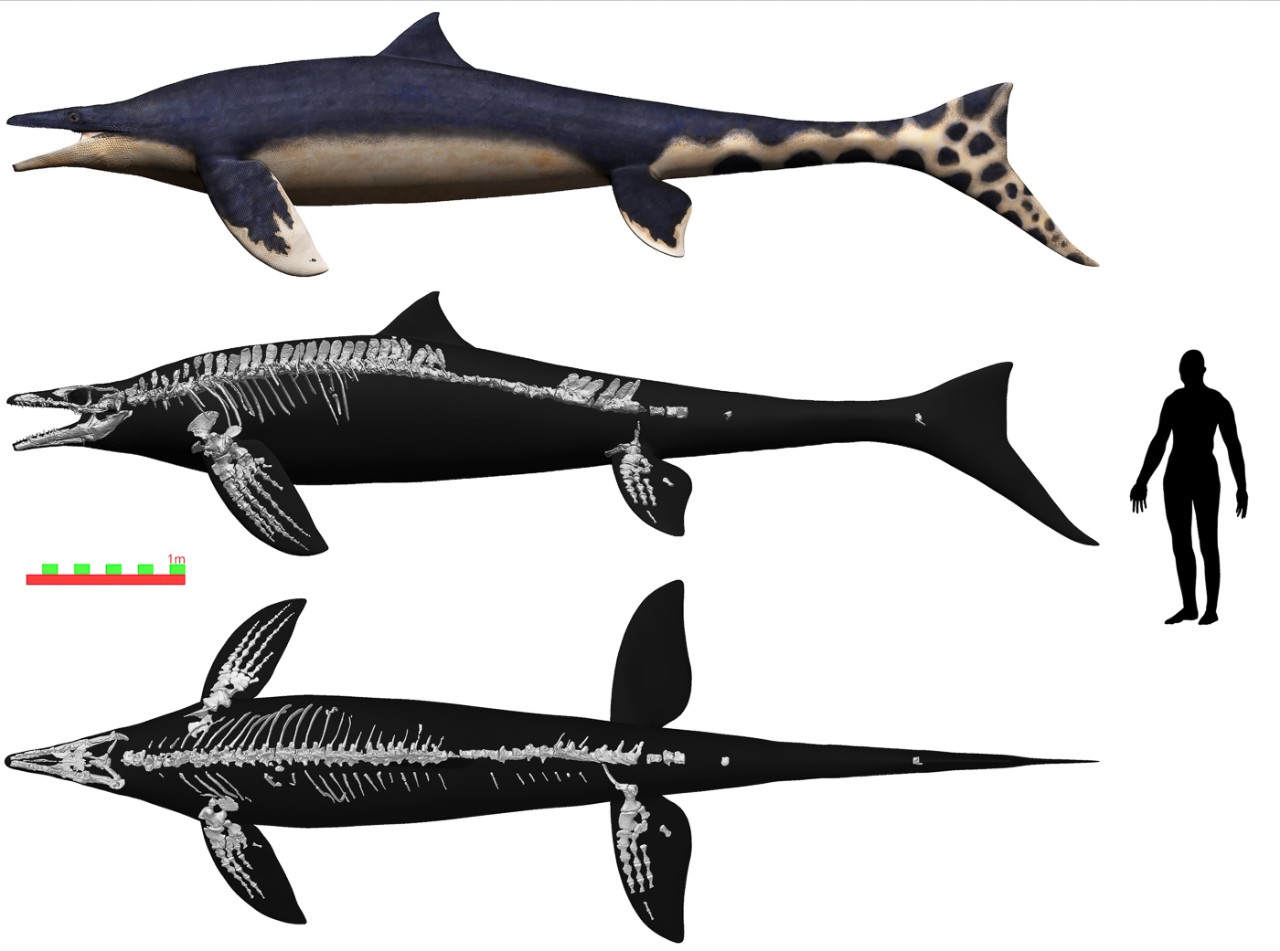
The Wakayama Soryu was about the size of a great white shark and lived more than 72 million years ago during the age of Tyrannosaurus rex and other late-Cretaceous dinosaurs. Illustration/Takumi
The specimen was discovered along the Aridagawa River in Wakayama by co-author Akihiro Misaki in 2006. Misaki was looking for fossils of invertebrates called ammonites when he found an intriguing dark fossil in the sandstone, Konishi said.
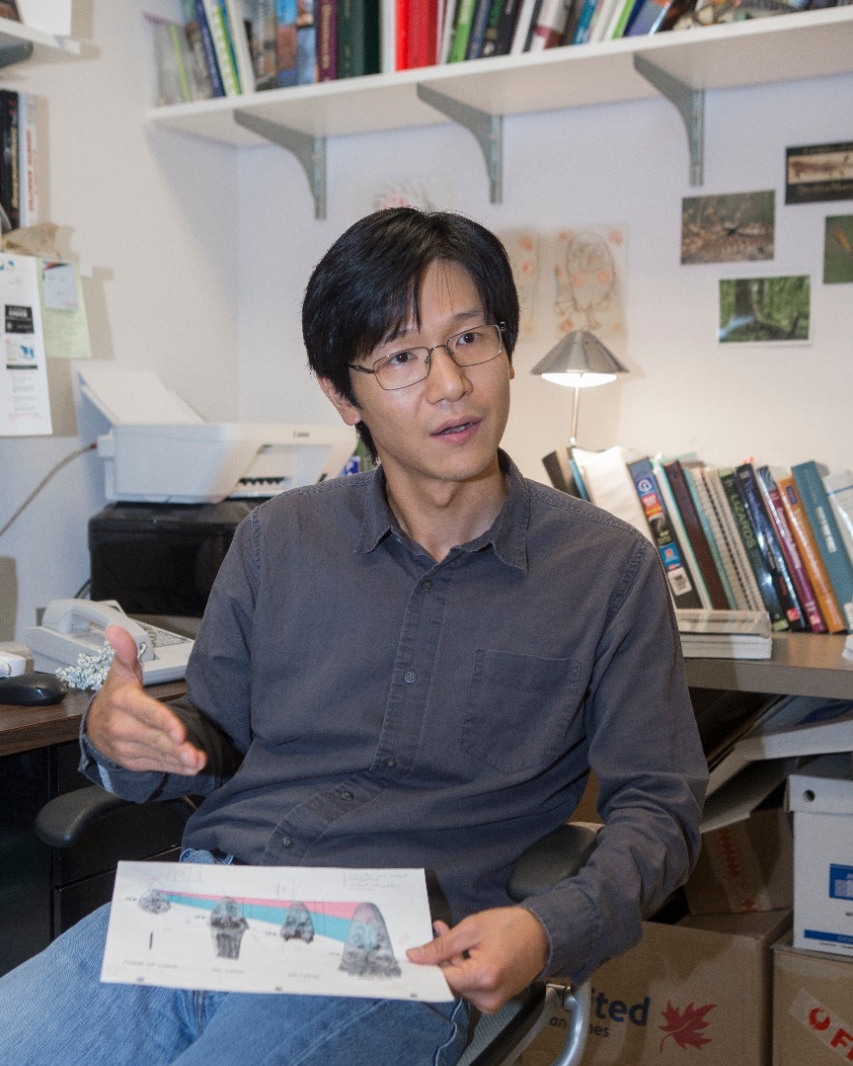
UC College of Arts and Sciences Associate Professor Takuya Konishi has studied mosasaurs for more than 15 years. Photo/Joseph Fuqua II/UC
Misaki continued looking for ammonites before curiosity got the better of him and he returned to the dark bone. Closer examination revealed it was a vertebra, part of a nearly complete mosasaur captured in the hard sandstone.
The specimen is the most complete skeleton of a mosasaur ever found in Japan or the northwestern Pacific, Konishi said.
“In this case, it was nearly the entire specimen, which was astounding,” Konishi said.
He has dedicated his career to studying these ancient marine reptiles. But the Japanese specimen has unique features that defies simple classification, he said. Its rear flippers are longer than its front ones. These enormous flippers are even longer than its crocodile-like head, which is unique among mosasaurs.
“I thought I knew them quite well by now,” Konishi said. “Immediately it was something I had never seen before.”
Mosasaurs were apex predators in prehistoric oceans from about 100 million years ago to 66 million years ago. They were contemporaries of Tyrannosaurus rex and other late Cretaceous dinosaurs that ruled the Earth. Mosasaurs were victims of the same mass extinction that killed off nearly all dinosaurs when an asteroid struck what is now the Gulf of Mexico.
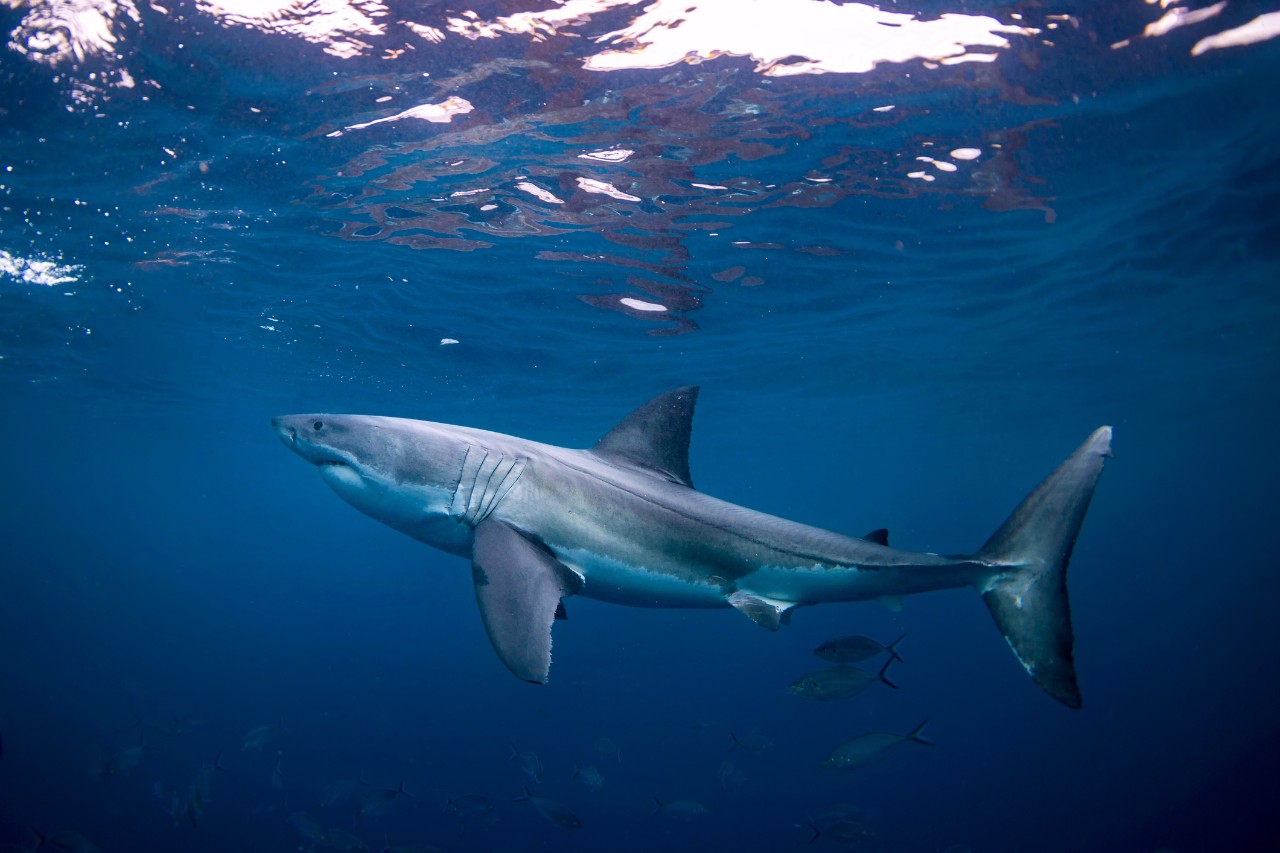
A mosasaur analyzed by University of Cincinnati paleontologist Takuya Konishi had a dorsal fin like that of a great white shark that allowed it to maneuver with precision in the water. Photo/Grisha Shoolepoff
The Wakayama Soryu has some features similar to mosasaurs found in New Zealand and other features comparable to mosasaurs found in California, he said.
It had nearly binocular vision that would have made it a lethal hunter, he said.
Researchers placed the specimen in the subfamily Mosasaurinae and named it Megapterygius wakayamaensis to recognize where it was found. Megapterygius means “large winged” in keeping with the mosasaur’s enormous flippers.
It opens a whole can of worms that challenges our understanding of how mosasaurs swim.
Takuya Konishi, UC Associate Professor of Biological Sciences
Konishi said those big paddle-shaped flippers might have been used for locomotion. But that type of swimming would be extraordinary not only among mosasaurs but among virtually all other animals.
Another prehistoric marine reptile called the plesiosaur used its paddle fins for propulsion, but it didn’t have a long rudderlike tail, he said.
“We lack any modern analog that has this kind of body morphology — from fish to penguins to sea turtles,” he said. “None has four large flippers they use in conjunction with a tail fin.”
Researchers speculated that the large front fins might have helped with rapid maneuvering while its large rear fins might have provided pitch to dive or surface. And presumably like other mosasaurs, its tail would have generated powerful and fast acceleration as it hunted fish.
“It’s a question just how all five of these hydrodynamic surfaces were used. Which were for steering? Which for propulsion?” he said. “It opens a whole can of worms that challenges our understanding of how mosasaurs swim.”
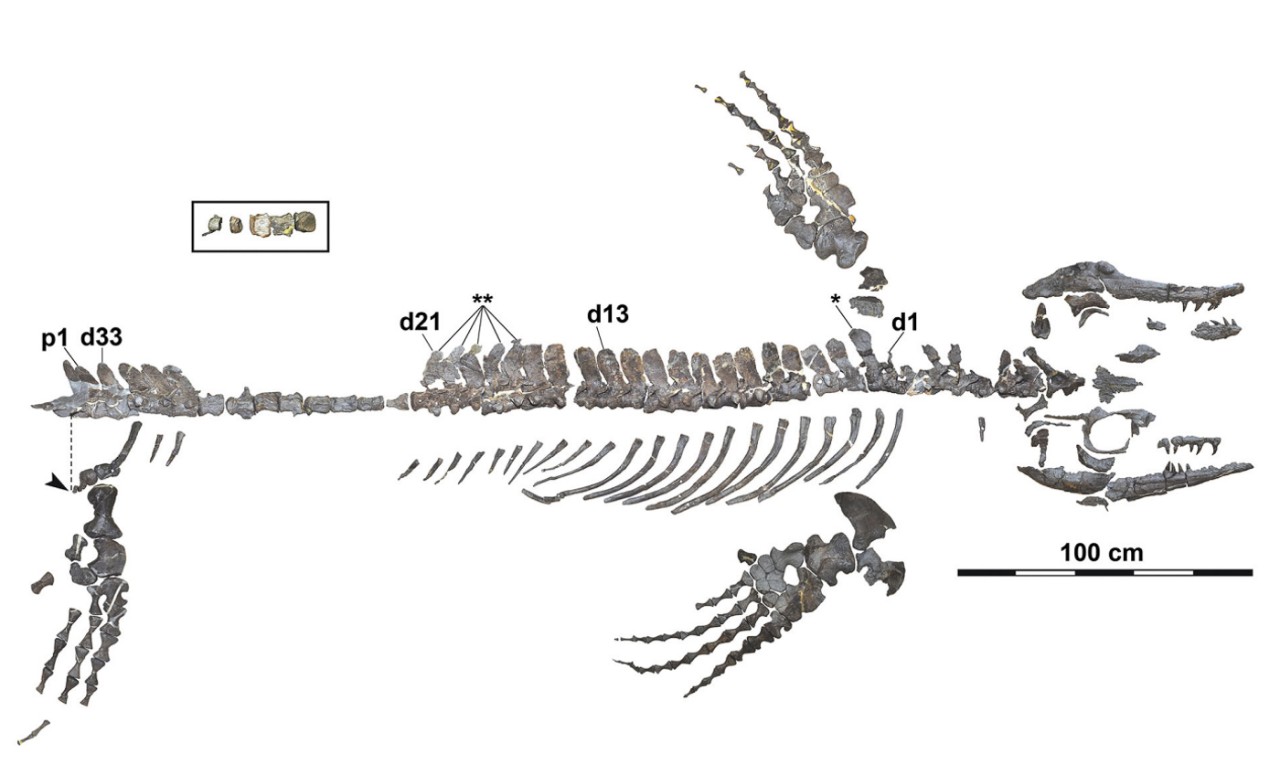
A mosasaur discovered in Japan was the most complete skeleton ever found in Japan or the northwestern Pacific. Graphic/Takuya Konishi
Unique to mosasaurs, the Wakayama Soryu apparently had a dorsal fin, based on the orientation of the neural spines along its vertebrae. The orientation of these spines is remarkably similar to that of a harbor porpoise, which also has a prominent dorsal fin, the study found.
“It’s still hypothetical and speculative to some extent, but that distinct change in neural spine orientation behind a presumed center of gravity is consistent with today’s toothed whales that have dorsal fins, like dolphins and porpoises,” he said.
A team of researchers spent five years removing the surrounding matrix of sandstone from the fossils. They also took a cast of the mosasaur in place to provide a record of the skeletal orientation of the bones before they were excavated.
The preparation of the fossil was supported by grants from Japan’s Ministry of Health, Labour and Welfare, and the National Sciences and Engineering Research Council of Canada, which helped researchers compare the newly described specimen with mosasaurs from around the world.
Featured image at top: An illustration of the mosasaur Megapterygius wakayamaensis. Illustration/Takumi
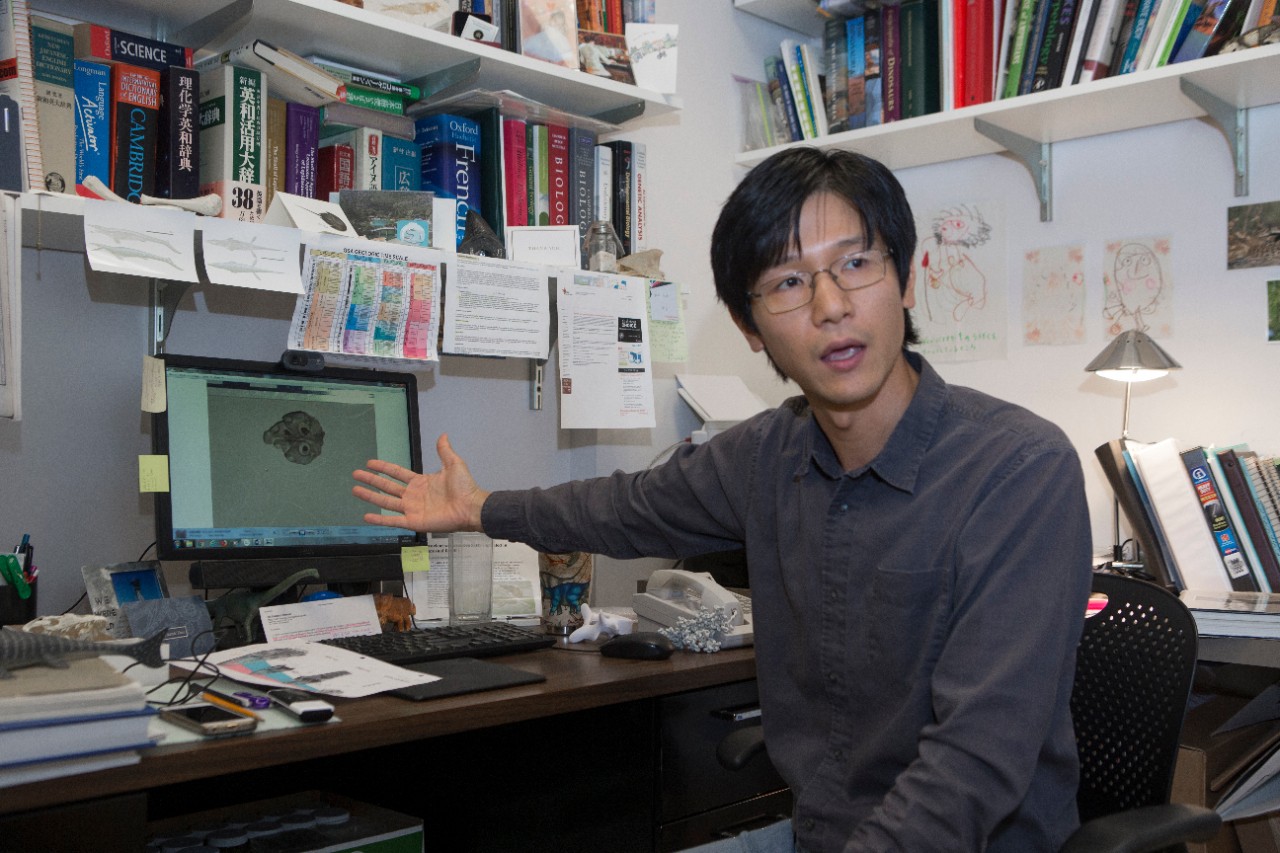
UC Associate Professor Takuya Konishi is an expert on ancient marine reptiles such as mosasaurs. Photo/Joseph Fuqua II/UC
Next Lives Here
The University of Cincinnati is leading public urban universities into a new era of innovation and impact. Our faculty, staff and students are saving lives, changing outcomes and bending the future in our city's direction. Next Lives Here.
Related Stories
Senior peer career coaches graduate with resumes ready
April 17, 2021
Profiles three senior peer career coaches in the University of Cincinnati's Bearcat Promise Career Studio
UC students recognized for achievement in undergraduate research
April 12, 2021
Undergraduate student researchers in sciences and humanities recognized in 2021
UC students recognized for achievement in undergraduate research
April 29, 2020
Each spring, the University of Cincinnati’s Division of Experience-Based Learning and Career Education (ELCE) honors students in experience-based learning programs.
Listen: Cincy Playhouse shares CCM audio plays
May 28, 2021
Each audio play is its own story, and you can listen to these pieces for free in any order you choose. They represent a year-long collaboration that reached into many corners of Cincinnati. Students from all over UC (CCM Acting, Sound Design, Stage Management, Commercial Music Production, Digital Media, and the College of Arts & Sciences’ Fiction PhD program) and local professional writers (YA author Liz Coley and musician, comedian and raconteur Paul Strickland) came together to make something truly special. Paul Strickland's play will be available soon. The Playhouse is assisting CCM by hosting and helping to promote these free audio plays.
UC staff have elected their 2021-23 Staff Senators
June 8, 2021
Join us in congratulating the 2021-23 new Staff Senate members! Elections were held in early May, and new senators will begin their two-year term in July 2021. All UC staff are encouraged to be part of the enthusiasm and excitement for our new senators by attending the Staff Senate online meeting via WebEx, June 30, 9-11 a.m.
UC LGBTQ Center founder takes on new diversity role
June 1, 2021
When Leisan Smith, ’99, ME ’03, began work this year as the inaugural chief equity officer at the prestigious Columbus School for Girls, the school’s staff and faculty were thrilled. The job description, they said, “was written for you.”
The making of a successful Faculty & Staff Campaign
May 25, 2021
More than one-third of UC’s nearly 7,000 faculty and staff have already contributed to the 2020-21 Faculty & Staff Campaign, putting the goal of 45% within reach.
Engineering student shifts from the stage to the lab
May 14, 2021
Garek Bushnell came to the University of Cincinnati with a singular goal: to study acting. He graduated in April 2021 with his bachelor’s degree in chemical engineering instead. Bushnell’s path between these two seemingly dissimilar fields is rooted in his mindset that following your passion will drive your determination to succeed – even if that passion comes from an unexpected source.
UC Foundation Board of Trustees elects six new members
May 11, 2021
The University of Cincinnati Foundation Board of Trustees has elected six new trustees to its 52-member board: Paul D. Green, BBA ’90; Lourdes J. Harshe, BBA ’92; Anndréa M. Moore, BBA’10; Arun C. Murthy, BBA ’95; Kirk L. Perry, BBA ’90, HON ‘15; and Christopher J. Van Pelt, BA ’91, MA ’93.
Three additional days off for UC employees
July 14, 2021
President Neville G. Pinto announced that UC employees will receive three additional days off in 2021 for going 'above and beyond' during the pandemic. The time away will take place during Winter Season Days.
